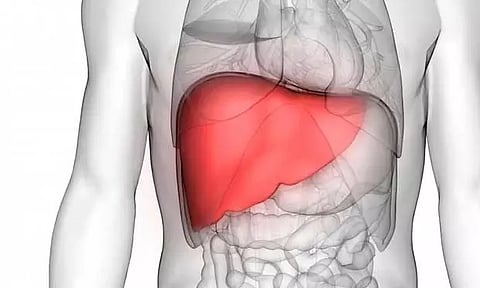

NEW YORK: The US Food and Drug Administration (FDA) has approved the use of sound waves to break down tumours in humans for liver treatment.
Pioneered at the University of Michigan (U-M) in the US, the technique called histotripsy offers a promising alternative to cancer treatments such as surgery, radiation and chemotherapy, which often have significant side effects.
FDA officials have awarded clearance to ‘HistoSonics’, a company co-founded in 2009 by U-M engineers and doctors for the use of histotripsy to destroy targeted liver tissue. HistoSonics can now market and sell its histotripsy delivery platform, called Edison, to hospitals and medical professionals for use in liver treatments.
“We want to leverage histotripsy’s immuno-stimulation effects and hopefully combine them with immunotherapy or drug delivery,” said Zhen Xu, U-M professor of biomedical engineering and a co-founder of HistoSonics.
“That will move histotripsy from a local therapy into one that can treat tumours globally all over the body and eventually into a cure. In terms of cancer treatment, that will be the next step, and I feel very excited about the potential,” Xu said in a statement.
A human trial underway since 2021 at the U-M Rogel Cancer Center and other locations has treated patients with primary and metastatic liver tumours via histotripsy, demonstrating the technology’s ability to meet the testing’s primary effectiveness and safety targets.
“Histotripsy is an exciting new technology that, although it is in early stages of clinical use, may provide a noninvasive treatment option for patients with liver cancer. Hopefully it can be combined with systemic therapies for a synergistic therapeutic effect,” said Mishal Mendiratta-Lala, professor of radiology with Michigan Medicine and principal investigator on the trial.
Histotripsy works by using targeted ultrasound waves to form microbubbles within the tumour. The forces created as those bubbles form and collapse cause the mass to break apart, killing tumour cells and leaving the debris to be cleaned up by the immune system.
What that could mean for patients is treatment without the physical toll of radiation or chemotherapy, fewer concerns with drug compatibility, far shorter recovery times than with surgery and less treatment discomfort. “This is possible because it is much easier to ensure that histotripsy treatments are hitting the tumour, and not healthy tissue, compared to radiation or invasive procedures,” the authors wrote.